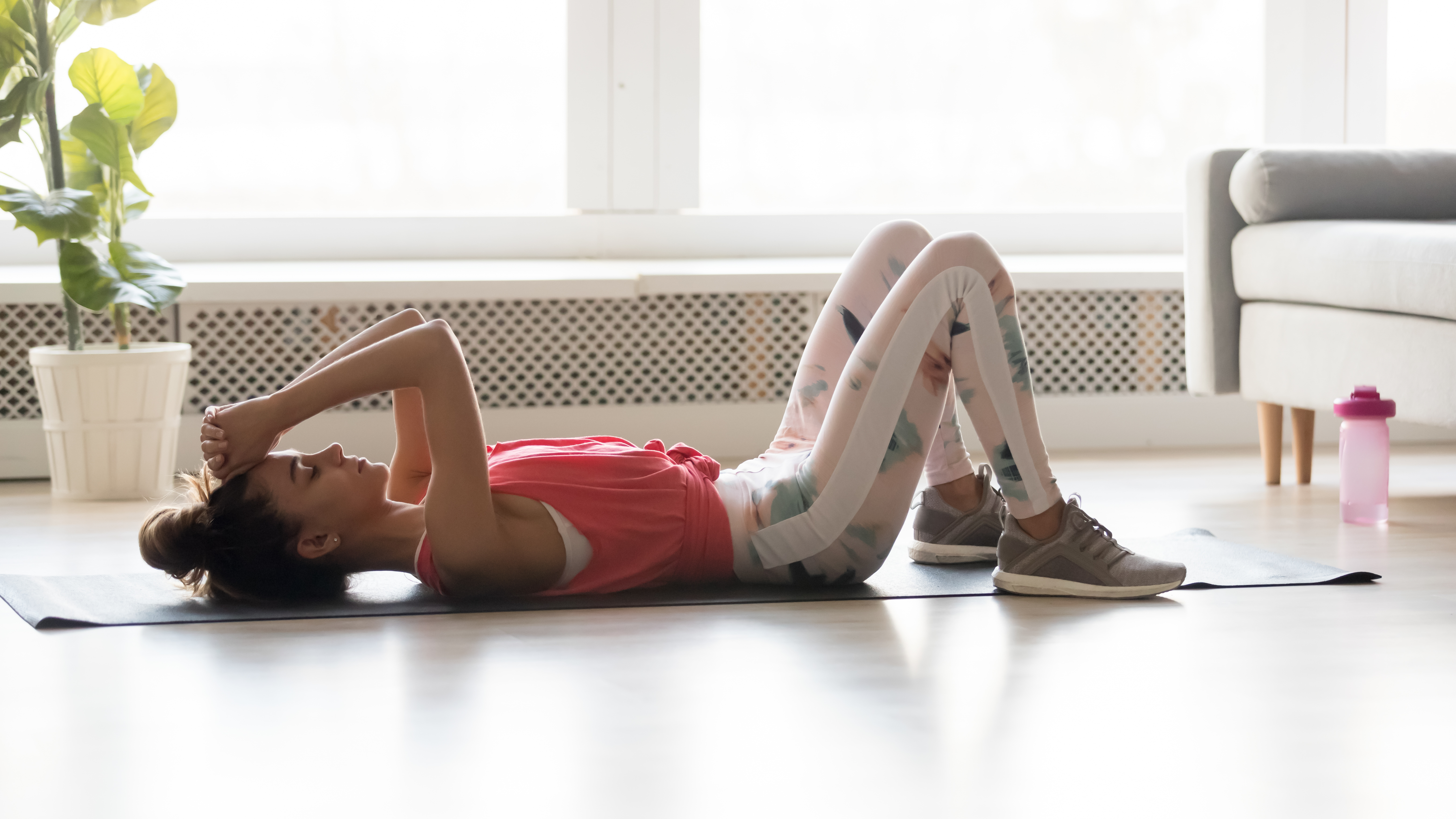Everything you need to know about exercising with a stoma
- 06.01.2020
- JessicaMG
- Clinical-negligence, Clinical-negligence
Getting used to life following stoma surgery can be extremely challenging, and knowing where to turn for support when getting your life back on track can prove to be another obstacle on the road to recovery. Fitness is one area that many people who have recently had a stoma often believe is a distant dream for them, and it is not uncommon for individuals who have recently undergone this type of procedure to feel like they will never be in a position to enjoy a healthy and active lifestyle.
Fortunately, this is nothing more than a myth, and people who have suffered years of ill health due to long-term bladder or bowel conditions very often find that stoma surgery is the first step to a happier and healthier lifestyle.
In this guide, we give you an introduction to exercising with a stoma, including tips and advice for getting active following surgery.
First things first
Before attempting any form of exercise after stoma surgery, it is essential to consult your doctor to establish whether it is safe to do so. In the early stages of your recovery after surgery, it is important to listen to what your body is telling you; if something hurts or feels uncomfortable, do not push yourself any further.
Ostomates are more likely than other individuals to develop a hernia following surgery, so it is important to ask your doctor if you can do abdominal exercises to strengthen this area. Hernia belts or form-fitting spanx-like material are a must-have for any ostomate looking to keep fit following the procedure.
Lolly Cooper, who uses blogging and social media to raise awareness of life with a stoma, said pacing yourself when getting back into exercise is a must. She explained: “Take things slowly at the beginning and make sure to protect your stomach muscles by building them back up slowly. I opt for high-waisted compression leggings, or sometimes use a stoma support belt to protect my stoma while exercising.”
Core muscle strengthening
People who have a stoma are at a greater risk of having a weakened core due to years of digestive or bladder problems, as well as the implications of surgery. Building core stability and flexibility is extremely important, making exercises and routine activities much easier.
The exercises listed below are designed to assist in recovery shortly after your operation, and will help to restore muscle function in the stomach. Anyone with an ostomy should be able to carry out these movements, but please discuss with a medical professional before starting.


This exercise can be started within days of surgery, and in some cases, it can be started while you are still in hospital.
How to do it
Lie on your back with your head supported by a pillow. Your feet should be flat on the floor/bed and your knees bent as far as is comfortable. Take a deep breath in and slowly exhale through your mouth. As you exhale, gently tighten up the deep muscles in your lower stomach.
Here, you should be able to feel a gentle tightening. It is important that you do not try to lift your bottom or press your back into the bed. Hold this braced feeling for between three and five seconds and then release. Breathe, relax, and then repeat between three and five times.
As you become stronger, you can carry out this exercise on the floor without a pillow. At this stage, you should aim for a stronger tightening feeling. Hold the brace for between 10 and 15 seconds, and then breathe in and out deeply. Repeat this up to five times.
How often
Try to do this exercise two or three times a day.


When to do it
This exercise can also be carried out in the early days following stoma surgery. Just be sure to start extremely gently and work within a small movement range.
How to do it
Lie on your back with your head supported by a pillow Your feet should be flat on the floor/bed and your knees bent as far as is comfortable. Gently rock your pelvis upwards and flatten your back into the bed or floor. While doing this, you should feel your stomach and bottom muscles tighten. Rock back to your starting position and repeat.
Aim for five repetitions of this movement initially, and ensure you are as gentle as possible.
As you gain strength, allow your back to arch up a little more and tighten your muscles more strongly. Try to build up towards 20 reps of this exercise.
How often
Try to do this exercise two or three times a day.


When to do it
This exercise can be introduced within seven to 10 days of your stoma surgery, provided your doctor says this is OK. Make sure you start it very gently and with a small movement, only pushing your legs as high as feels comfortable.
How to do it
Lie on your back with your head supported by a pillow and your knees bent as far as is comfortable. Then, very gently, tilt your pelvis backwards and tighten your pelvic floor muscles. Lift your bottom off the bed/floor and slowly lift up, vertebrae by vertebrae, until your bottom is off the bed. Lift your bottom as high as you comfortably can, then hold for a moment and slowly lower your spine and pelvis back down.
Repeat three to five times initially, building up to between 10 and 15 repetitions over time, lifting higher as you feel more comfortable.
How often
Carry out this exercise between two and three times a day.
Once you have mastered these exercises, you can:
- Add more movement to each exercise every few days. Start by carrying out these exercises twice a day, before increasing the number of sessions as you become stronger.
- Build up the ‘holding’ part of the exercise
Low-impact exercise
Once you feel more mobile following stoma surgery, moving on to low-impact forms of exercise is a great way to ease yourself back into an active lifestyle.
Walking
Walking is one of the easiest and most enjoyable forms of exercise for many people of all ages - and can be a great way to incorporate exercise back into your life following stoma surgery. When walking, it is possible to build up your fitness at your own pace.
Another great thing about walking for ostomates is that it can help to relieve stress and the symptoms of constipation.
Swimming
Swimming is a great and physically demanding exercise for anyone to enjoy because it works the whole body without putting too much pressure on your stoma. Most ostomy pouching systems are water-resistant, which means you do not have to worry about leakages or loosening.
Here are some top tips to follow when it comes to swimming with a stoma:
- Check your pouch seal is secure before swimming
- Before getting in the pool, you should empty your pouch. Also, ensure your ostomy barrier has been on for at least an hour before swimming. If you are worried about output, eat a light meal a few hours before jumping in
- If you use a filtered pouch, use a filter cover sticker on your deoderising filter to prevent water from entering the pouch. This can be removed once you have finished swimming and dried off
More demanding exercises

If you feel as though you want to dedicate more time to fitness following stoma surgery, you certainly have the freedom to do so - and nothing should hold you back. Stoma blogger Jenna Donofry fell in love with fitness after making the decision to have her large intestine removed following a period of eight years with no remission from Crohn’s disease - and since then, she has never looked back.
A week of fitness looks like this for Jenna:
- Monday - full body cardio
- Tuesday - upper body weights + core
- Wednesday - lower body
- Thursday - pilates or plyometric
- Friday - cardio + core
- Saturday - yoga
- Sunday - full body again + core
She says: "These are typically 30-minute workouts each. I don't like to take days off, because if I give myself an inch I'll take a mile. In a week I'll also typically hike at least three times, 3-4 miles and ride my bicycle a few times. Before I had my stoma I did none of these things. In fact, hiking had always been on my list of goals to get to, but with as ill as I was, I didn't think that would ever happen. One of the few times I'm happy to be wrong."
You can find out more about Jenna’s fitness story by clicking here.
Knowing where to start when it comes to picking up a more demanding exercise regime can be difficult, but yoga, pilates and running are a great place to start. There is a growing online community of ostomates with a passion for fitness who are dedicated to breaking down barriers and empowering individuals who have undergone stoma surgery to lead a healthy and active lifestyle.
Some of our favourites include personal trainer Mesha Moinirad, who has dedicated his life to helping others who have a stoma bag. After being diagnosed with Crohn’s, colitis and irritable bowel syndrome when he was a student at university, he spent four years on medication before having his large intestine removed.
Known as Mr Colitis Crohn’s, he uses social media to show people what it’s like to live with a stoma, while also running a gym where he offers personal training sessions to people living with similar conditions. Find out more about Mr Colitis Crohn’s on his Instagram page or by watching this video.
Feeling empowered
Starting a fitness regime after major surgery can be incredibly daunting, and those who have suffered from long-term chronic illnesses may feel as though they do not have the confidence to take those all-important first steps to an active lifestyle. By engaging with people in similar situations online, who themselves have fallen in love with fitness after stoma surgery, as well as consulting with medical professionals, ostomates can make significant changes to their life that could be the start of something amazing.
